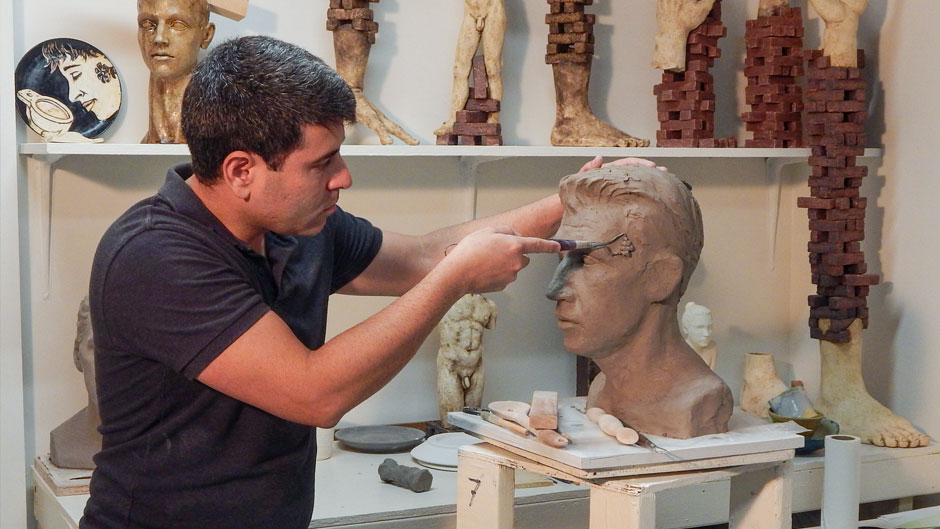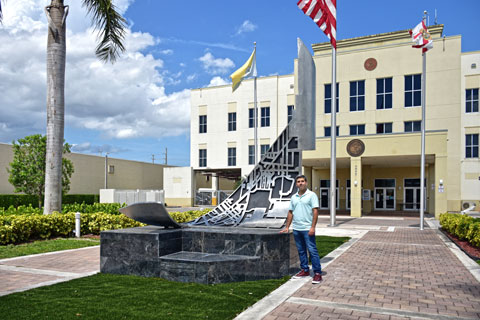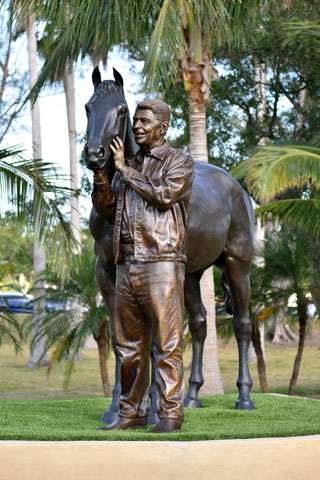The U Creates continues a series focused on highlighting members of the University of Miami’s creative community.
In this Spotlight feature, meet Carlos Enrique Prado, a senior lecturer at the University of Miami who teaches ceramic courses and the study of the human figure in clay.
 1. Tell us about yourself.
1. Tell us about yourself.
I consider myself a visual artist and an educator, putting the same level of commitment, responsibility, and pleasure into both careers. I am originally from Havana, Cuba, a place where I received my education and developed a career as a professional artist and art educator. Sometime after moving to South Florida, I began teaching ceramics at the University of Miami, where I currently hold the position of senior lecturer of art.
2. What sparks your creativity?
Despite the years that I have been involved in the production of works of art, it is still an enigma that ignites my creativity. However, most of the time, the initial spark for many of my works comes from the study of visual arts and art history itself. In a way, my works are rhetorical conversations with works of art that have been made before. In my vision, art helps us see our world. So, we need art to be able to see the world as we need language to be able to think. Thus, taking into account the inevitability of the dialogue between a contemporary artwork with its predecessors, I found inspiration in that symbiotic relationship.
3. What inspired you to become an artist?

2020
Stainless steel, paint, concrete, rebars, marble tiles
13' x 10' x 8'
Location: Medley Town Hall, 7777 NW 72nd Ave, Medley, FL 33166
Commissioned by: Town of Medley and Art in Public Places, Miami-Dade County
From a young age, my parents exposed me to art in many ways, which inspired me to pursue an artistic career. Among my first memories are visits to museums and art galleries; art books at home; and discussions about art, not only visual arts but cinema, theater, and dance. My parents have degrees in art history and my father also developed a career as a film director, which gave me the opportunity to grow connected to the art world. Also, at an early age, I discovered certain natural abilities to work with some visual art techniques, especially sculpture, which gave me the opportunity to be accepted into art schools. Later, I also recognized the responsibility of the art and the artists with society, for which I firmly confirmed my initial vocation.
4. What is one thing you hope your students learn in your courses and take to their future careers?
The love of art. However, I am not referring to the love for some beautiful objects in museums or galleries but to art as a tool to think and understand reality in a different way than, say, science. In connection with this, I attempt to help my students understand some of the principles of the visual arts as a language, techniques related to ceramics and sculpture, and connection to art history. I try to apply this approach not only to students who are pursuing an artistic career but also to those who are not. Especially, for those who will be professionals in areas not directly related to art, the knowledge acquired in my classes gives them a tool to face future problems from a different perspective.
5. What accomplishments are you most proud of in your career?

2018
Bronze, concrete, rebars, steel
12' x 30' x 19'
Location: Tropical Park, 7900 SW 40th St, Miami, FL 33155
Commissioned by: Art in Public Places program, Miami-Dade County
I really appreciate the way Miami has embraced me because I have been able to develop several public artworks, in particular two major commissioned sculptures in South Florida. The sculptures include the President Reagan equestrian monument, commissioned by Miami-Dade County for Tropical Park, and the recently finished large-scale public sculpture located in the Town Hall Plaza in the town of Medley. I am also very grateful and humbled for the opportunity to teach at the University of Miami and to be part of the wonderful faculty community in the Department of Art and Art History.

